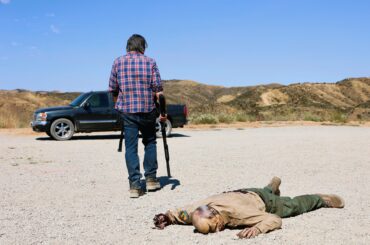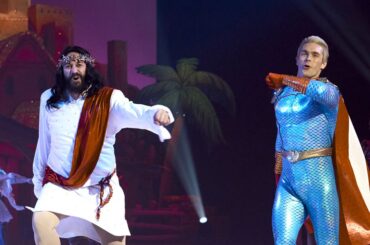
Shōgun cinematographer Sam McCurdy always kept perspective in mind. The artist shot episodes four, five, seven, nine, and ten of the masterful FX series. Throughout his time shooting the epic, the director of photography sought to create the most honest portrait of a character’s experience.
The authenticity, whether historical or dramatic, is tangible in every interior and exterior.
McCurdy brought season one to a close with the penultimate episode, “Crimson Sky,” and the finale, “A Dream of a Dream.” The cinematographer, who previously shot episodes of Peacemaker and Lost in Space, shoots grandness with striking intimacy. In a wide-ranging, two-part interview, the Shōgun cinematographer explained the decisions behind some of the series’ thrilling scenes.
When you work with someone like Hiroyuki Sanada, do you think, he has these beautiful qualities I really want to capture. What are you looking for when he’s in front of a camera?
Well, I think we do that, certainly I do. Every project you go into, you are given your cast list, and you look at and study the faces. You study previous work of theirs so that you are getting a good rounded idea of how they’ve been presented in the past. What you think has worked, what you think worked in terms of bringing out the character of a face.
Blessed with somebody like Hiro. There’s charisma coming out of every pore; he’s that in real life. I mean, he’s the most gentle, honest, charismatic man I’ve ever met. He’s a joy to work with, a joy to speak to. And when he sits on a horse or whether he is standing, giving a speech or whatever, he has a command that is thrilling to watch.
I was looking to bring out the texture. He has an incredible face. From my perspective, you’re always looking to see the detail there to give him his structure. You want to feel the cheekbones. For somebody like Hiro, I’m looking for the lines and for the shape. You’re trying to bring as much of his natural character out because it’s all there. With his eyes and his facial structure, you are given a very easy palette to work with.
You can put a light in the wrong place and it can look wrong. I think having had that time to study Hiro’s face and having had that time to meet him, work with him, and converse with him, you go, okay, I see what I see where you are taking Toranaga. We do have to hide some things from the audience.
It certainly wasn’t the sort of show where you’re like, “Okay, Hiro, he’s the emperor, he gets a backlight.” Never that approach. It was always something way subtler and organic. These are things I don’t think I’ve ever told anybody else, but there are subtle things that you would accentuate.
Certainly for Hiro, I found myself accentuating the organic colors to a sense of, to keep a sense of shape within the face. And then you would take Moeka [Hoshi] or Anna [Sawai], not that I would sculpt it less, but you would wrap it more, because it became about the stoic nature of the women in the show.
How so?
Some of the strength in the performances from people like Moeka or from Anna was that kind of rigidness. We found ourselves being much softer with the light on them so that we weren’t purposely picking out the details. You could feel the structure in their lives. And then, it became a little more organic and a little less delicate for Hiro or for Tadanobu [Asano], some of the stronger male characters in the show. We found that balance worked well, because certainly it gave a different structure to each character.
It’s not that your lighting characters or lighting actors completely individually to give them that sense, but aesthetically, it felt right. When Anna and Hiro came to set fully made it up in costume, you just felt like that’s what suited. It felt like that was gentler, that was rougher or more rugged, that there was a more textured, more sculpted way of dealing with some characters and a gentler, less sculpted way of dealing with other characters. Again, the fun things we had to play with.
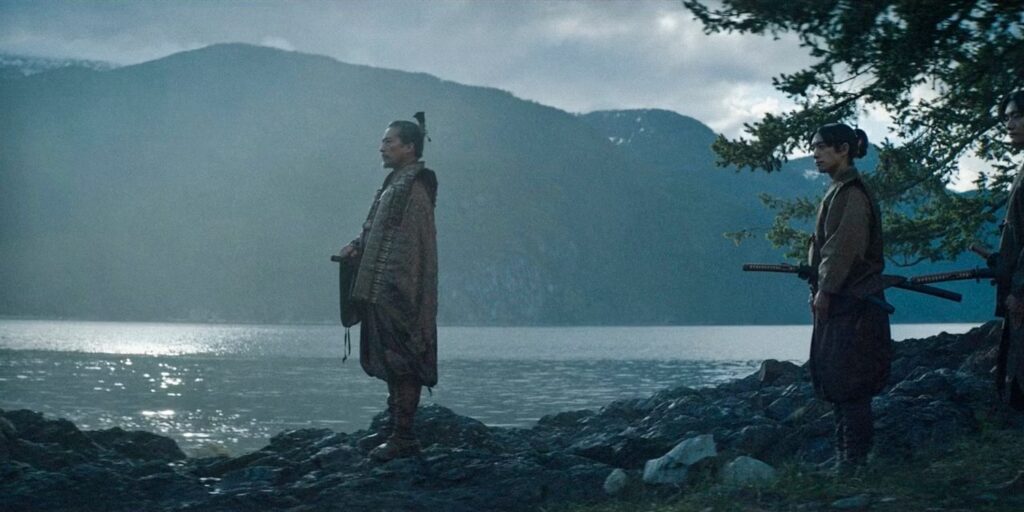
I did want to ask the final shot of Hiro in the show, the final image of season one. How was it that just right, getting that, what feeling did you want to end season one on with that final shot?
There were options for the end. In our heart of hearts, myself, Fred , Justin, we remember vividly shooting that last shot of Hiro on the Peninsula,. We always knew that the sun set right behind the mountains in front of Hiro. We were cutting it right to the wire in terms of the length of our day. At one point, I was pleading with our producer Ed McDonald, like, “Ed, I might be two or three minutes out on when the sun is actually going to go behind the hillside, so you’ve just got to give us a little bit of grace, please.” Ed was like, “Of course, Sam, it’s going to be the closing of the show. We’ll let you get the sun in the right place.”
Everything was in position waiting for just that right moment to get the silhouette of the mountains, the silhouette of Hiro, everything like that. One of the reasons I love working with Fred is we both enjoy natural lights, but one of the things we love about natural light is dictating when a scene’s going to be shot. So, we’d go through a script and if it just says “day exterior,” Fred and I will sit down and go, “Okay, this should be morning or evening.” The whole sequence with pulling the boat up and Hiro on the peninsula, we wanted it all to feel a little dusky.
When everything comes together like that and you are sitting by the monitors and you’re watching the final image at the time of day, and it’s such a perfect shape, the costume, the shape of Hiro himself, and the camera pulling away, you’re kind of like, yeah, okay, we did okay.
So episode nine, there is a great sense of point of view throughout the episode with Mariko. Even when when she’s trying to fight her way out of the city, you just feel like the camera’s still so with her even when it’s not. How did you and Fred want to create a point of view there?
Fred, [creators] Justin [Marks] and Rachel [Kondo], and I, we went into the whole of Shōgun wanting to present a truth and a truth in the characters, and a truth in the story. We would take the perspectives of who in our particular scripts we wanted to follow.
Episode nine is a very fine balance. It could have been shot in so many ways. Knowing that we wanted to keep it very much from Mariko’s perspective, from her point of view, so that it was always people watching her or the camera was always with her, seeing people watch her. It actually was almost as simple as that.
I’m a firm believer in if you make that choice, you make that decision, then we stick with it. That’s the decision we make with the camera, that when you are with her, you are with her. So, the cameras, the ability to move in her world and see everybody around her was always important. So, the luxury of an anamorphic lens is sometimes you can be a little bit wider than you might normally be. It can still be a very cosmetic lens, but it gives you the opportunity to open the background up so much.
Episode nine, in particular, for me, it almost a, this is how you shoot anamorphic. This is how you use an anamorphic lens to tell a story. It allows you to feel like you are very singular in the perspective you are shooting from. And that was all decided in the prep with Fred and I. It was making sure that when we went into shoot every day, that we were very conscious of the lenses we used when photographing Anna, and we were very conscious of the lenses that we used when we were photographing those around her.
Again, it sounds very simplistic, but her point of view would be shot from her point of view. The camera is her perspective. Even if you had people watching, it wasn’t just a cutaway shot of somebody watching; it was actually from her point-of-view. It felt focused. Everybody looking at her felt focused. Everything that she was doing became the purpose of that episode.
Another good example of that is when Lady Ochiba and Mariko talk. There are these beautiful two-shots, their backs to each other. Just the ambiguity of their closeness is visually expressed so well there.
It’s the same thing, the whole of that episode. I am very grateful that you like that episode because, in terms of the language of cinema, Fred and myself, we like using it for the right reasons. We want to hold somebody in a two-shot on the right lens without it feeling like we’ve thrown away a two-shot. We could have shot it on any lens and it would’ve been okay in the cut.
To have the ability to shoot it on that slightly wider lens, the focus falloff is different to what it would be if you were further back on a longer lens. The focus is more both of them were. For us, it’s telling the story. A part of telling that story is choosing the right lens at any moment in time to shoot the right coverage, as opposed to just shooting the coverage.
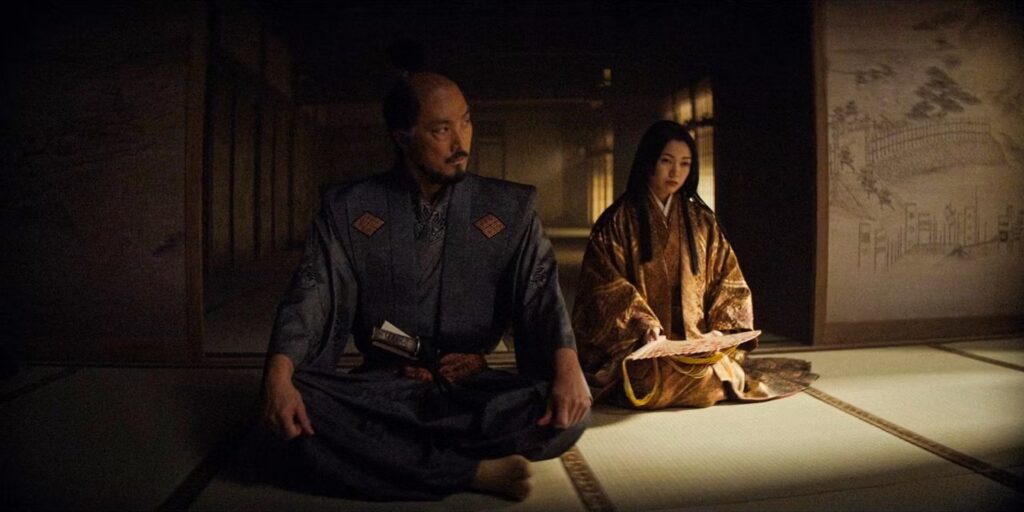
I love how the camera says what’s unsaid by the characters in that scene.
Thank you, Jack. That’s very, very kind.
You’re welcome. For the final scene in episode nine, discussions did you and Fred have about shooting Mariko’s death scenes?
It was really interesting actually, because again, there are two versions of the very final shots. When everybody gets into the lockup, we want that energy. We wanted a little bit of energy so that we could almost lose Anna. You’ve got a moment off, where is she? And then again, the camera returns to her and it’s all about her again. Within that energy, we knew we’d be a little more handheld and a little more frantic with the movement. We could then very stoically present her in front of the door. And then that became about there being no other distractions.”
We shot a version that was a too romantic passing of Mariko. Again, when it shows you when you are right and when you’re wrong. It shows you when you actually just need to stick to the script. It was right to have it go so quickly. Having shot and seen the two versions, the emotion was already in the buildup and prior [seppuku] scene.
A lot of us have talked about it since rewatching all episodes, and Mariko needed that moment since episode one. There’s a belief that what happens to Mariko is exactly what she was striving for since episode one. So, to go super fast and kill her so quickly and so brutally is almost kind of a better way for her to go. That’s what she would want as opposed to an overly romantic slow-motion death. That actually isn’t what Mariko would’ve wanted in the first. She just wanted to go.
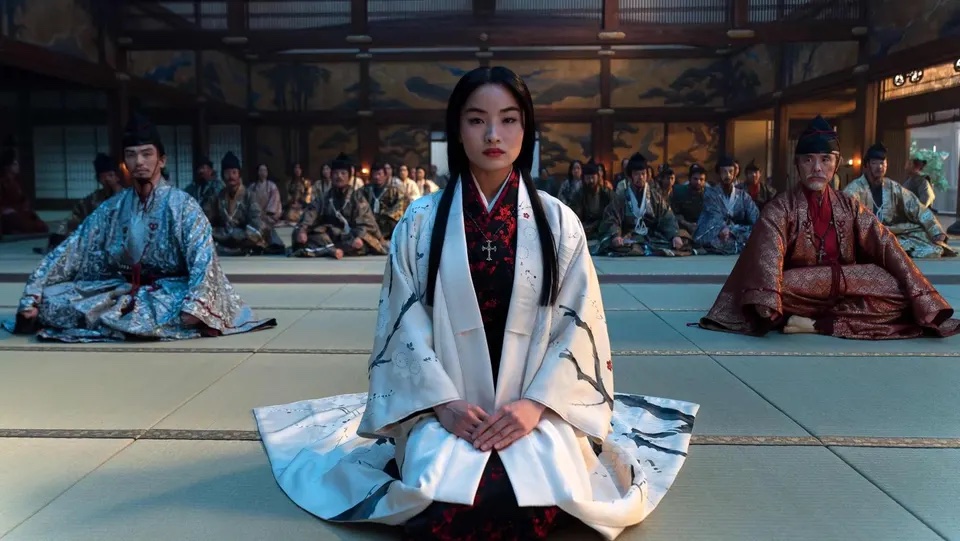
I’ll leave you with, the magic hour looked incredible in Mariko’s seppuku scene. You, the VFX team, and the production design, everything, that was a well done collaboration from all the departments.
We had a lot of fun on that set. It’s without a doubt one of the greatest sets I’ve ever shot. In terms of the lighting and the grip rig that we had up there… Very early on in the show, we knew that we weren’t going to be able to wrap 360 green-screens around everywhere. We learned a lot as we went through all the episodes, but we were able to recreate sunsets and sunrises, I thought, really well on stage.
And yeah, that whole moment from her leaving the priest and then going off by herself, that gives you the ability to have a magic hour that lasted all day if we wanted it. It was just so much fun to play with. For me, it was like a kid with a new box of paints. It was just incredible.
Shōgun is available to stream on Hulu. Check back next week for part two of our conversation with Sam McCurdy, which gets more technical.


![‘Shōgun’ Cinematographer Sam McCurdy Breaks Down Episodes 9 & 10 [Part 1]](../wp-content/uploads/2024/07/hiro.jpeg)
